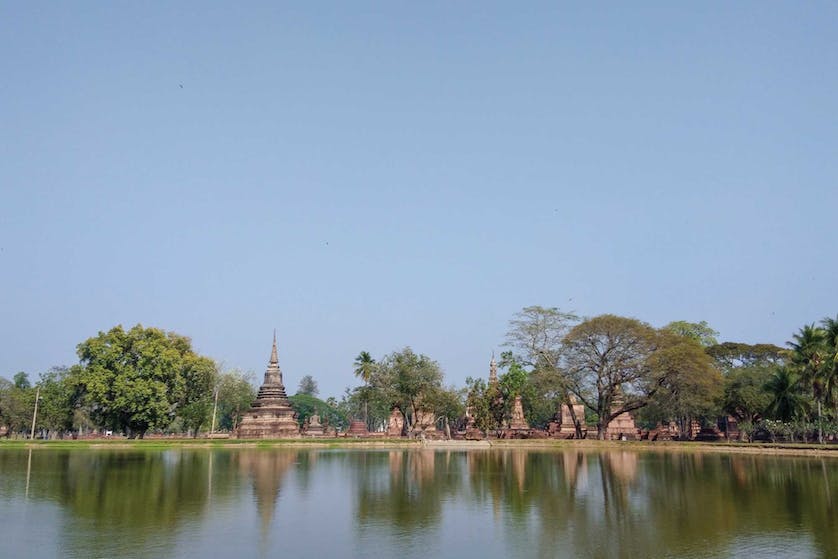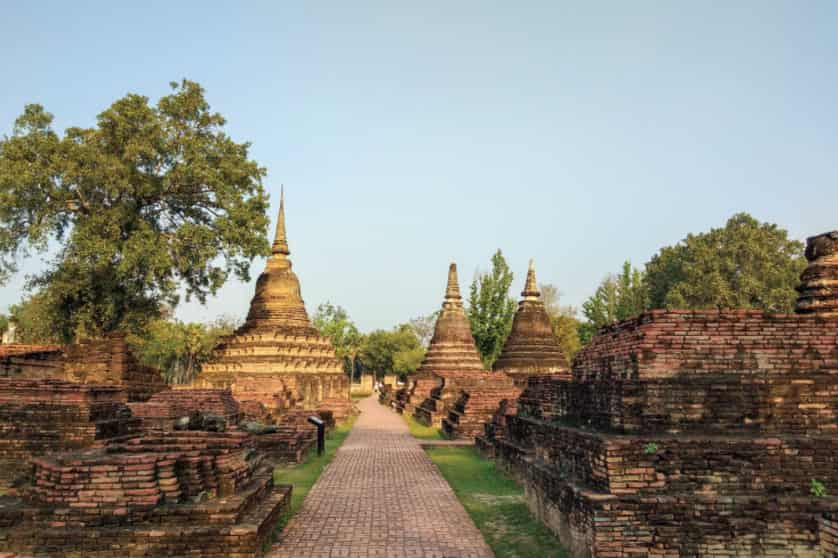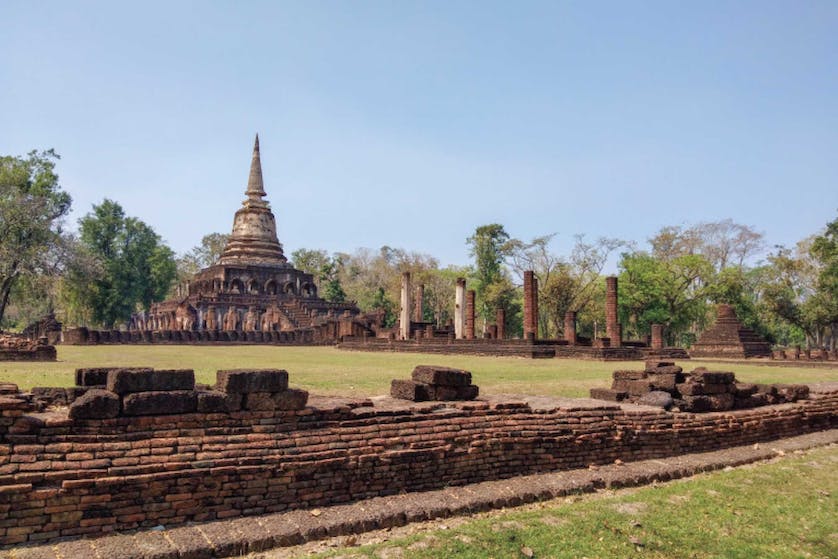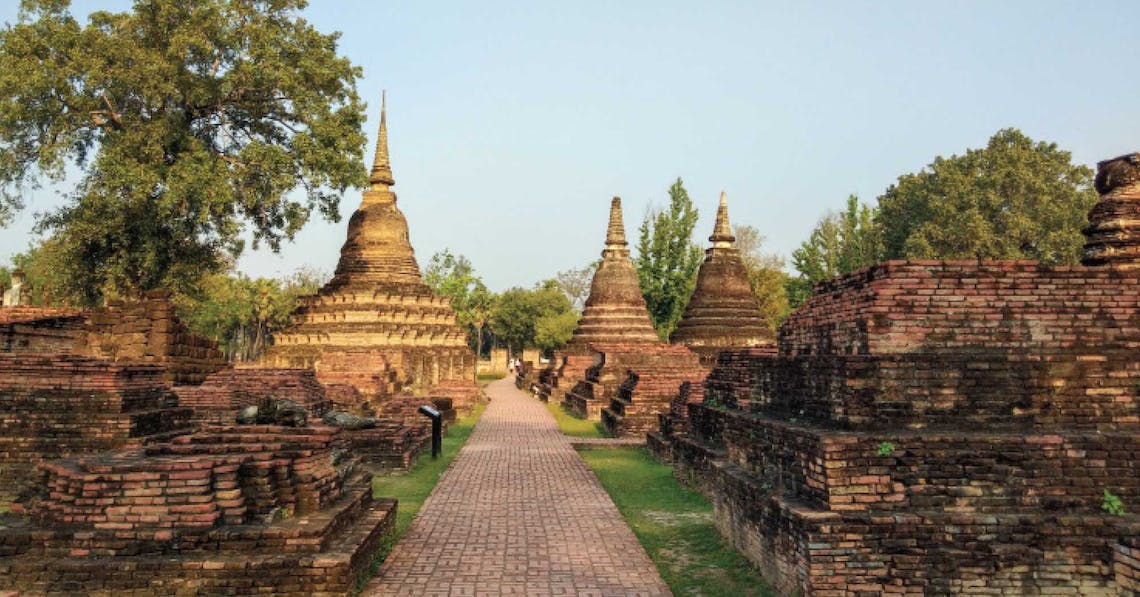With the current craze for ancient temples and traditional Thai dress thanks to the hit Channel Three tv series Buppesannivas, people from across the nation are reviving their interest in Thailand’s historical city of Ayutthaya. Flocks of people, often in splendid traditional garb, arrive at the ancient city and pose in front of temple ruins to recreate their favourite soap opera. Even our dear Prime Minister has joined the craze, occasionally adorning a jaunty sash around his waist. This madness (although possibly short lived) has made Ayutthaya busier than it has been in decades and despite being in my late-20s, but I have an air of ‘ageing National Trust member’ about me, which is why I like to visit my ruins in peace. So for those like me who are put off by hordes of tourists getting in my way, Sukhothai is a pleasant alternative.

Built in the 13th Century, it was the first capital of Siam, founded by King Ramkhamhaeng some 800 years ago. The city was home to many Siamese Kings before the golden age ended and the Ayutthaya Kingdom emerged. By the late 1500s, the cities of Sukhothai and Si Satchanalai were abandoned after a Burmese invasion, and have stood as ruins ever since.
Charmed by the history of Thailand and keen to learn more, my wife and I decided to take a long weekend to see the ancient capital for ourselves. We packed up the car and headed out, planning a route through the mountains that turned what would otherwise have been a mundane highway slog into a stunning weekend drive with amazing mountains and splendid rice fields that filled our eyes with vibrant greens – a pleasant change from the then-smoky grey Chiang Mai.
It’s best to stay nearer the Historical Park, rather than the new city to the east, so we booked a few nights in The Terminal Sukhothai — a mid-range hotel with nice rooms and a small swimming pool just minutes away from the park. After a late lunch of Sukhothai Noodles — the city’s most famous dish which is both deliciously sweet and spicy at the same time — we took a leisurely afternoon exploring the Ramkhamhaeng National Museum.

The next morning, we woke up bright and early as the mist still shimmered over the ancient temple structures, and headed into the historical park. No vehicles are allowed in the park but you can hire a bicycle…or a tandem if you want to impress your Daisy. Which I did.
Although tickets are more expensive for foreigners, the price is still reasonable given that this is a UNESCO World Heritage Site. Riding our rental tandem around the park, (I should have guessed that I’d be doing all the peddling!) the sheer beauty of the ancient city overwhelmed us both. The park was far from busy and the quiet sounds of birdsong complemented the ancient structures as the rays of morning sun cut through the crumbling walls like messages from the gods.
Apart from the historical park, Sukhothai is an otherwise quiet and slightly unimpressive city. There are a number of weekend markets in the main town and some beautiful cafes that you should most certainly visit — we recommend the Nakorn de Sukhothai and Hong Rama Tearoom — and during the winter months, a cultural market just north of the historical park is put on, with ancient food, traditional performances and souvenirs.

Instead of wasting time in the city, we packed up our car, checked out of our hotel and headed north, stopping by the ancient city of Si Satchanalai on the way. For those looking for an even quieter, wilder experience, then this is it. Surrounded by towering trees and overgrown bushes, many say that the temples here are even more beautiful than those in Sukhothai, and I’d have to agree. The star of the show is Wat Chang Lom, a massive stupa surrounded by life-size elephant statues built by Ramkhamhaeng in 1286 after the discovery of a Buddha relic in the town. The city itself has a fascinating history, home to the oldest kilns in Thailand used to create celadons — jade green glazed pottery.
As the afternoon sun warmed my back, we headed back to the car to finish our journey home to Chiang Mai via the rolling mountains of Phrae and Lampang.
